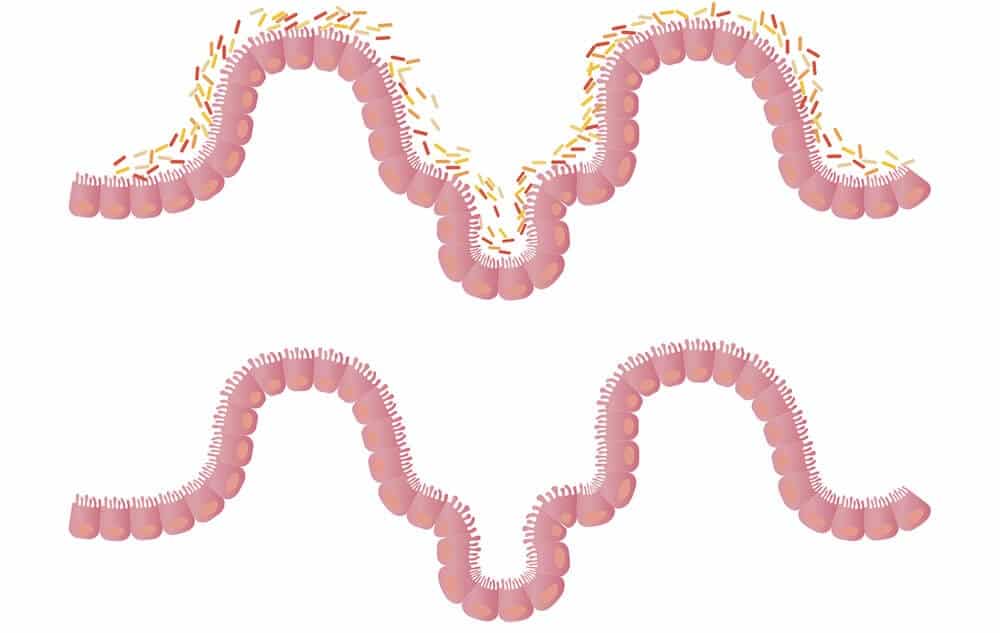Metabolite Analysis: Intestinal Bacteria can Predict Obesity

Intestinal bacteria are not simple; they can predict obesity and be passed on from generation to generation.
A growing number of studies have shown that dysbiosis of the intestinal flora is closely associated with the development of various diseases such as obesity, diabetes, non-alcoholic fatty liver, inflammatory bowel disease, and gastrointestinal tumors. Therefore, it is crucial to conduct intestinal flora metabolite analysis to explore the association between intestinal flora metabolite changes and host disease occurrence for disease prevention and treatment. Recently it has been shown that the composition of the gut microbiota in infancy, especially at two years of age, maybe the earliest warning sign for the detection of obesity. On the other hand, experiments conducted by some scientists in mice have found that the mammalian gut microbiome can be transmitted from generation to generation.
With the development of microbial metabolomics, qualitative and quantitative methods can be used to understand the physiological status of microorganisms through the analysis of microbial metabolites with the help of analytical techniques and data processing methods of metabolomics, and then explore the potential mechanisms of interaction between gut microorganisms and hosts and the role of gut flora metabolism on host health and diseases. CROs Medicilon can provide clients with drug metabolite analysis services.
The primary substrates metabolized by the intestinal flora are carbohydrates, proteins, and peptides in food that cannot be digested and absorbed by the small intestine. Dietary fiber in food can be fermented and utilized by bacteria to produce monosaccharide and oligosaccharide molecules, or organic acids such as ethanol, lactic acid, and succinic acid, and further to form short-chain fatty acids such as acetic acid, propionic acid, and butyric acid. A growing body of evidence reveals an essential association between gut microbes and metabolic syndromes such as obesity and insulin resistance. However, recent studies have found that gut flora plays a role in obesity, and there is some evidence that this may be causal.
1, Analysis of gut microbial metabolites in predicting obesity
Scientists from the University of Colorado conducted the NoMIC study, recruiting 165 infants and analyzing their BMI data as they grew to age 12. The NoMIC study began in 2002 and is one of the first projects in the world to study early gut microbiota. The data showed that at age 12, 20 percent of the 165 children were overweight or obese. Researchers sequenced 16s rRNA genes from the participants’ gut flora samples at six-time points throughout childhood (4 days, ten days, one month, four months, one year, and two years) and compared them to their body mass index at age 12.
The results showed that gut flora at days 10 and 730 (age 2) was significantly associated with child BMI. That gut flora composition at age two explained over 50% of children’s BMI variation. Interestingly, the researchers found qualitative differences in the design of children’s gut flora at day ten and year 2, and these differences were associated with the BMI z-score of children at age 12. The BMI z-score measures a child’s weight adjusted for age and personality. The study also found that children who became obese later in life did not have higher BMI z-scores at the age of two years.
There is a link between gut microbiota composition and later BMI early in life, which becomes stronger as the child gets older and is exceptionally robust at age 2. This is very interesting, according to the researchers. This is because babies do not show an apparent phenotype at two years of age, whether they will gain weight later in life.
These results suggest that the gut flora phenotype exists before any apparent signs of overweight or obesity appear. Since gut flora is strongly influenced by diet, the researchers believe this association could also reflect the importance of dietary choices before obesity.
However, the entire population of this study was a Norwegian group. The researchers believe that it needs to be repeated in other people, which is expected to develop a new tool for identifying children at risk of obesity.
2, the vast majority of mammalian intestinal bacteria are from the maternal intestine
To learn more about the mouse gut biome, the researchers captured 17 mice at two locations in Arizona and Canada, USA. They then set up housing for these mice in their labs – with mice from one place kept separate from the other. They allowed these mice to mate and produce offspring, after which the offspring of these mice were allowed to make their offspring. This lasted for three years and had 11 generations of mice. They collected samples of their intestines and genetically tested these intestinal samples to identify the bacteria in the mice’s intestines.
These researchers found that the gut biome of mice remained very stable – the gut biome of the 11th generation of mice was almost identical to that of the first generation of mice. They propose that this is evidence that the gut biome bacteria undergo intergenerational transmission, an example of vertical information. They point out that in the few cases where new bacteria are introduced into the mouse gut from an unknown external source, these new bacterial types tend to cause disease. Therefore, they propose that the harmful bacteria present in the heart may come from a horizontal source (horizontal source). It also supports theories that mammals and their gut biomes co-evolved in a way that led to symbiosis. They conclude by suggesting that evolutionary theory suggests that their findings may also apply to humans.
Using scientific methods to perform metabolite analysis of the gut flora, to search for covariation between metabolic phenotypic changes and structural changes in the flora, to identify and characterize functional bacteria that have a significant impact on host physiological metabolism, and to model the association between host metabolism and gut flora at the systems biology level, we can objectively detect metabolic components and concentration changes of gut microbes and demonstrate the metabolic state of gut bacteria, thus allowing us to study more deeply the complex metabolic system associated between the gut flora and the host, and to understand how the gut microbiota affects the metabolic state of the host through its metabolism and co-metabolism with the host.

